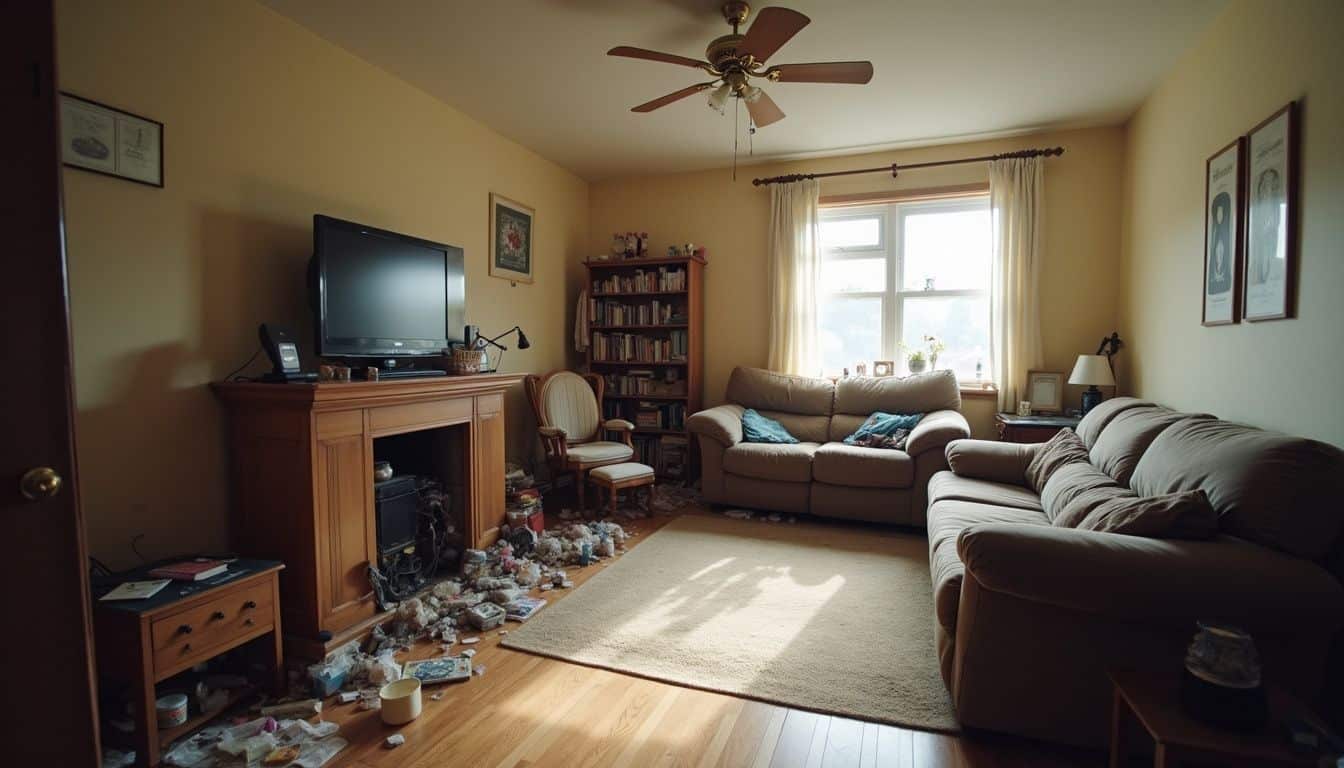Your family home feels too big and empty now that your kids have moved out. Many empty nesters struggle with downsizing after kids leave because they’ve accumulated decades of belongings and memories in spaces that once buzzed with activity.
This guide provides seven practical strategies to help you declutter your home, handle sentimental items wisely, and transition smoothly into your next life chapter. You’ll discover how to make this major change feel exciting instead of overwhelming.
Key Takeaways
Over 70% of empty nesters modify their homes after children move out, with many choosing renovation over relocation.
Professional movers charge $800-$2,500 for local moves and $2,500-$5,000 for long-distance relocations when downsizing.
Estate sale companies typically take 25-35% of sale proceeds, while professional organizers charge $30-$80 per hour.
Multifunctional furniture like drop leaf tables and storage beds maximize space efficiency in smaller downsized homes.
Studies show increased social participation among empty nesters correlates with improved health outcomes, especially for women.
Table of Contents
Why Do You Want to Downsize After Your Kids Leave?

Empty bedrooms create a constant reminder of children who no longer live at home. Many Gen X parents find themselves maintaining large homes filled with unused space that once buzzed with family activity.
Property taxes continue climbing regardless of how many rooms sit vacant. Utility bills remain high even though half the house stays empty most days. Maintenance costs pile up for spaces that serve no real purpose anymore.
Financial freedom becomes possible through downsizing after children move out. Lower mortgage payments free up money for travel, hobbies, or retirement savings. Reduced property taxes mean more cash stays in your pocket each month.
Smaller homes require less upkeep, which saves both time and money on repairs. Gen Xers can finally explore those dream neighborhoods they avoided due to space needs or school districts.
Even homes with paid-off mortgages still drain resources through ongoing property taxes and maintenance expenses. Park model cabins offer an attractive downsizing option that combines affordability with modern comfort.
A house should serve the family, not the other way around.
How Can You Declutter Your Home Effectively?

Decluttering your home after the kids move out requires a clear plan and smart choices. Gen X women often find success by starting with obvious items they no longer need and working through each room step by step.
Which Non-Sentimental Items Should You Start With?

Bathrooms are an excellent place to begin downsizing. These spaces typically contain fewer sentimental items, making decisions easier. Old towels, expired medications, and half-empty bottles of lotion can be discarded.
Your medicine cabinet may hold products you forgot you owned. Remove duplicate items like extra toothbrushes or multiple tubes of the same cream. Many Gen X women find they’ve accumulated travel-sized toiletries for years.
Storage units often become places where we store items we rarely use. Focus on these areas next because they contain practical items rather than emotional treasures. Categorize everything into four groups: keep, donate, sell, and discard.
Make quick decisions to avoid mental fatigue from overthinking each choice. Finish each space entirely before moving to the next area. Discard trash right away and place donations in boxes.
This method helps prevent reconsidering your choices and maintains momentum throughout the process.
How Can You Declutter One Room at a Time?

Decluttering your home room by room makes the process manageable and less overwhelming. This systematic approach helps you stay focused and see real progress as you prepare for your new chapter.
- Create a room-by-room schedule that spreads the work over several weeks or months, giving yourself enough time to make thoughtful decisions about each item without rushing the process.
- Start with spaces that hold less sentimental value like guest bedrooms, storage areas, or utility rooms to ease yourself into the decluttering mindset before tackling emotionally charged spaces.
- Set up three distinct sorting areas in each room using boxes or bags labeled “keep,” “discard,” and “donate” to make quick decisions about every item you handle.
- Focus completely on one room before moving to the next space, which prevents you from feeling scattered and helps you see the actual progress you’re making.
- Begin each room session by removing everything from surfaces like your desk, dresser tops, and shelves to force yourself to evaluate each item individually.
- Work in two-hour blocks to maintain your energy and focus, taking breaks to prevent decision fatigue that can slow down your progress significantly.
- Take photos of sentimental items you can’t keep to preserve memories while freeing up physical space in your smaller future home.
- Ask yourself three key questions about each item: “Have I used this in the past year?”, “Will this fit my new lifestyle?”, and “Does this bring me joy or serve a purpose?”
- Consider renting a self storage unit temporarily for items you’re unsure about, giving yourself time to decide without the pressure of immediate choices.
- Text your adult children photos of items they might want before donating or discarding them, involving them in the process while respecting their current living situations.
Evaluating Furniture and Décor for Downsizing

Your furniture choices can make or break your downsizing success, especially since Gen-X women often struggle with letting go of pieces that defined their family years. Smart evaluation starts with measuring each item against your new space requirements while considering how different texting spots and health-conscious activities will shape your daily routines.
Why Choose Multifunctional Furniture?

Multifunctional furniture solves space problems that plague modern urban living. Sofa beds, fold-out desks, and expandable dining tables give you more options in less space. These pieces cost less than buying separate items for each function.
Millennials and urban dwellers show growing interest in these smart solutions because they work well in small apartments and condos.
These versatile pieces help you stay organized while cutting down on clutter. Modern designs now combine good looks with practical use, making your space both beautiful and functional.
The furniture supports minimalist living trends that many Gen X women embrace as they downsize. Smart storage ottomans can hold blankets while serving as extra seating for guests. Dining tables that expand for holidays then shrink for daily use make perfect sense in smaller homes.
How Do You Measure Furniture for a Smaller Space?
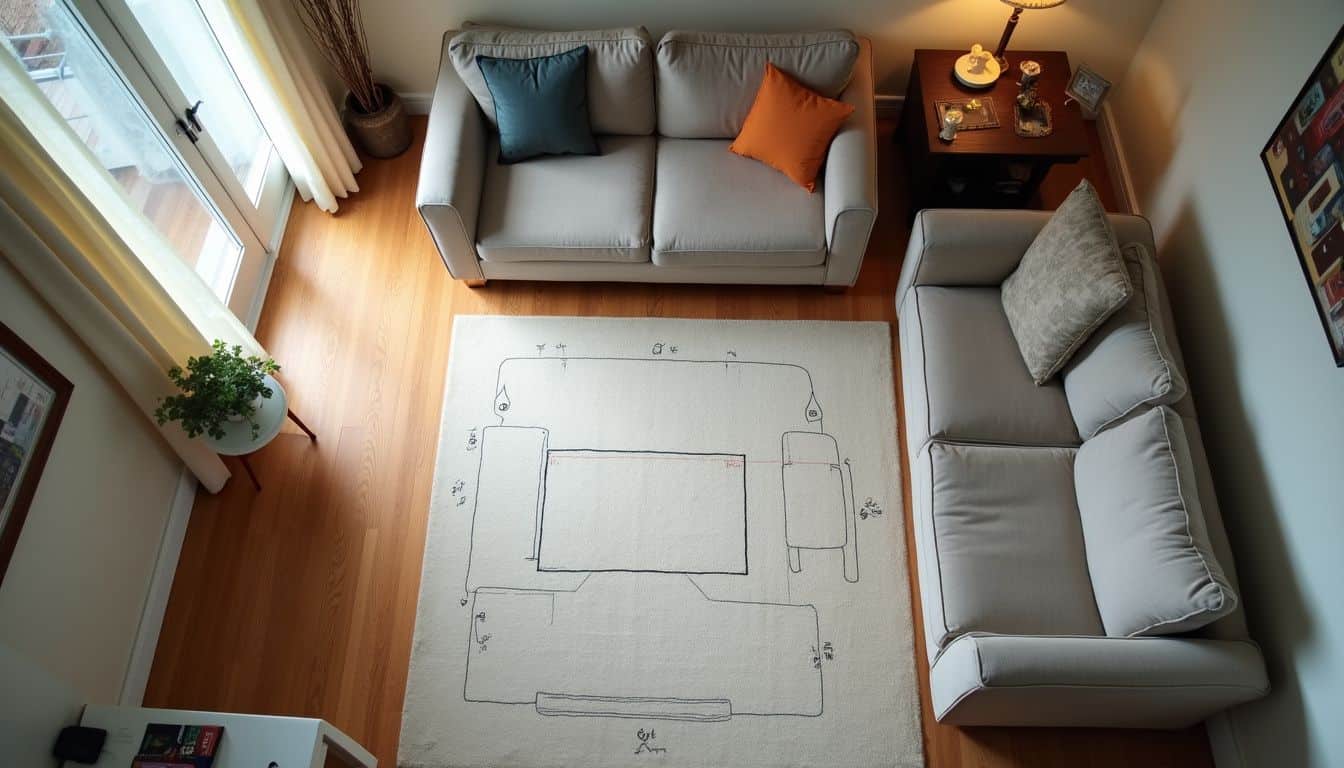
Measuring your furniture carefully prevents costly mistakes during your move. Start by measuring both your current furniture and the rooms in your new home. Write down the length, width, and height of each piece you plan to keep.
Remember to measure doorways, hallways, and stairwells in your new space. These measurements help you avoid the frustration of furniture that won’t fit through narrow passages. Gen X women often find that their large dining room sets simply won’t work in compact condos.
Create a simple floor plan of your new home using graph paper or a smartphone app. Mark the dimensions of each room and note where electrical outlets and windows sit. This visual guide helps you see which pieces will work and which ones need to go.
Use a moving truck calculator to estimate the right truck size based on your measured furniture. Take photos of your current room layouts and technology setups for reference. These pictures help you remember how cords connect and where everything belongs.
Smart planning now prevents problems later, just like careful hand-washing prevents the spread of germs.
Measure twice, move once saves both time and your back.
Your next step involves choosing furniture that serves multiple purposes in your smaller space.
Handling Sentimental Belongings Thoughtfully
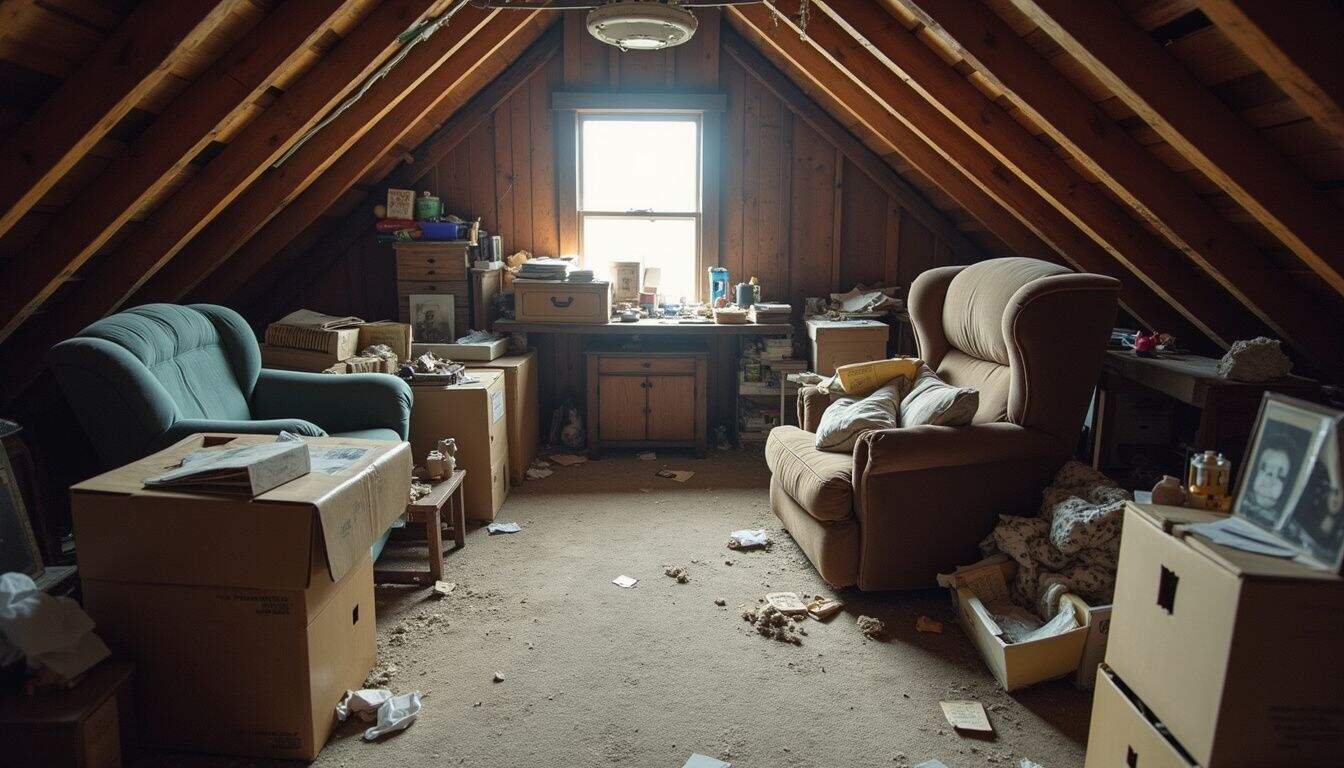
Sentimental items create the biggest challenge for Gen X empty nesters who start downsizing their family homes. These treasured belongings hold decades of memories, making decisions about what to keep feel as unsteady as a wobbly cat syndrome episode where balance becomes difficult to maintain.
How Can You Involve Your Children in Downsizing Decisions?

Involve the entire family for shared decision-making and a smoother transition. Your adult children can help you sort through belongings and choose what stays or goes. Make the process a game and highlight the positives of downsizing to keep everyone engaged.
Spend extra time with your children during this phase to help them adjust to the changes. Family members should participate in choosing items from the “everything else” category after you’ve handled essentials and obvious discards.
Communicate with children about their belongings and storage expectations before you start sorting. Encourage children to select which of their items to keep or let go from their old rooms and shared spaces.
This approach helps create a sense of closure and connection during the transition. Approach sentimental items with care by creating piles for “keep,” “unsure,” and “offer to family” so everyone can weigh in on meaningful objects.
Involving children in these decisions makes the downsizing process feel less overwhelming and more like a family project.
What Are Keepsake Boxes and How Do You Use Them?

After your children help you sort through belongings, keepsake boxes become your next powerful tool for managing sentimental items. These special containers organize and limit emotional treasures to what fits inside their boundaries.
Each family member should have their own airtight storage box for proper preservation of memories.
Start by gathering all sentimental items in one place to make better decisions about what stays. Focus on pieces that create strong emotional responses, like your daughter’s first drawing or your son’s baseball trophy.
Limit sentimental belongings to one box per person and label the contents for easy identification. Write a list of items on paper, as this method helps with better memory retention.
Review your keepsake box contents at least once a year, preferably during winter break. Gen X women find this system particularly helpful for managing emotional attachments within a defined space while preparing for their next life chapter.
A keepsake box isn’t just storage; it’s a curated collection of your family’s most precious moments that deserves intentional care and regular attention.
How Do You Plan Your Future Needs When Downsizing?

Planning your future needs during downsizing requires careful thought about your changing lifestyle and goals. Gen X empty nesters must consider their retirement plans, health requirements, and desired activities when choosing their next home.
What Hobbies and Lifestyle Changes Should You Consider?

Your empty nest years open doors to activities you never had time for before. Gen X women often discover passions like painting, gardening, or learning new languages that smaller spaces can easily support.
Consider hobbies that work well in compact areas such as reading, crafts, cooking classes, or digital photography. These activities bring joy while fitting perfectly into your downsized home’s layout.
Lifestyle changes should match your new freedom and space limitations. Travel becomes more feasible since downsizing frees up resources for personal enjoyment activities like exploring new destinations or dining at favorite restaurants.
Think about social activities available in your potential new location, such as book clubs, fitness classes, or volunteer opportunities. Your smaller home can become a launching pad for adventures rather than a burden that ties you down with maintenance tasks.
How Do You Pick a Home That Fits Your Retirement Goals?
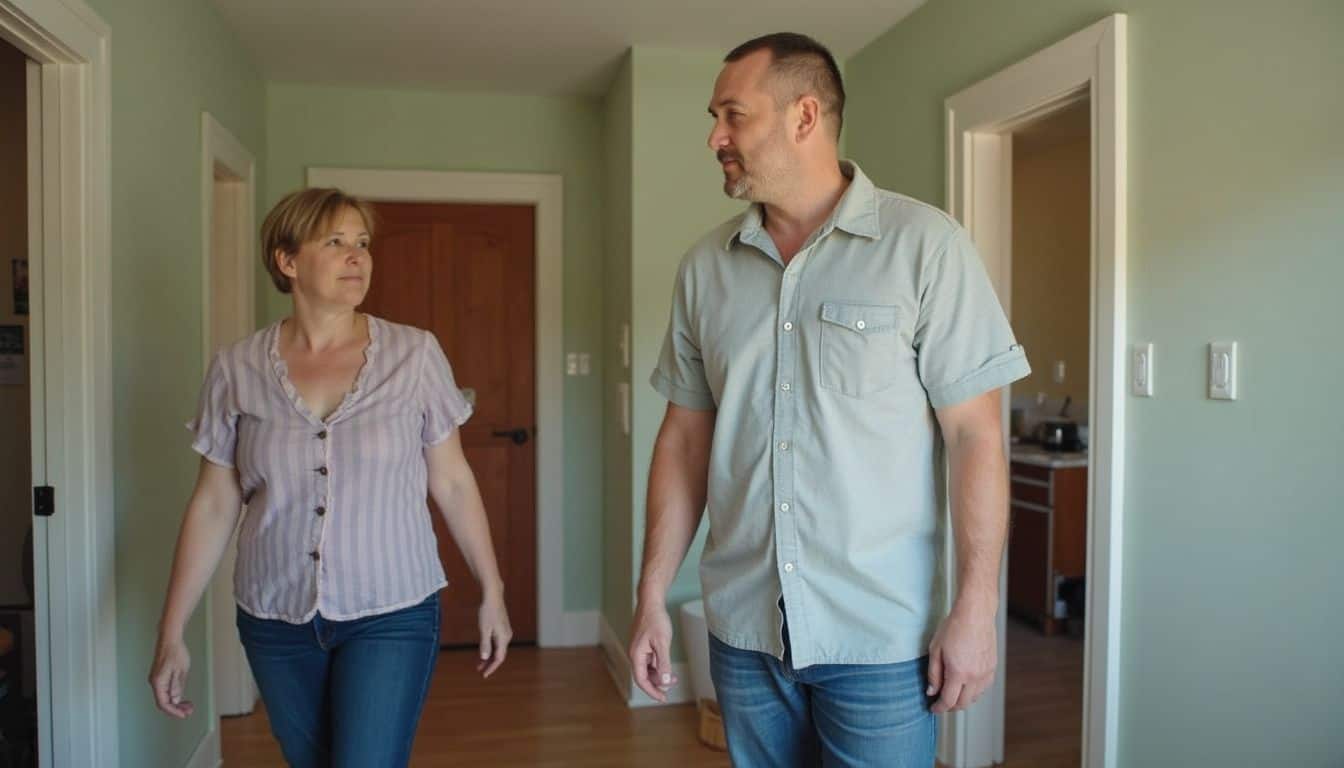
Selecting the right retirement home requires careful financial planning and lifestyle considerations. Choose a new home that costs less than your current home’s sale price or available equity.
Make sure your budget covers a new mortgage or allows for an outright purchase without creating financial strain. Factor in extra expenses like property taxes and capital gains taxes that many Gen X retirees overlook.
Rising costs can quickly burden retirees, so avoid properties that stretch your finances too thin.
Location and accessibility features play crucial roles in long-term satisfaction. Single-story homes or condos with elevators provide better accessibility as you age. Evaluate proximity to family members, medical facilities, and activities you enjoy.
Consider how the home’s features will support aging in place over the coming decades. Prioritize manageable living spaces that require less maintenance than large properties. The right choice balances your current needs with future requirements, creating a comfortable foundation for your retirement years.
How Can You Maximize Space in Your New Home?

Smart storage solutions can transform your smaller space into a comfortable, functional home that meets all your needs. Gen X women often discover creative ways to make every square foot count through clever organization and strategic furniture choices.
What Are the Best Space-Saving Furniture Options?
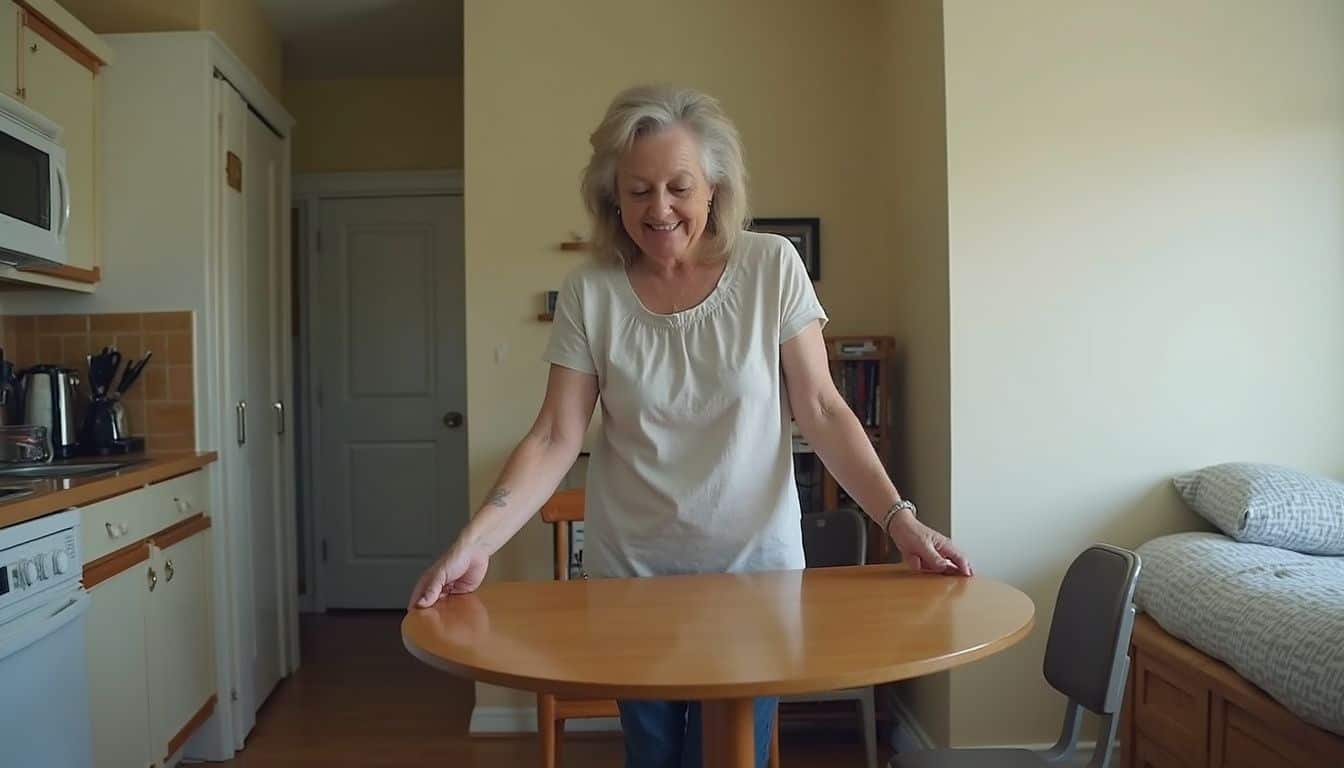
Drop leaf tables offer flexibility in dining space, making them perfect for empty nesters who entertain occasionally. These tables expand for dinner parties and fold down for daily use.
Expandable kitchen tables accommodate varying numbers of guests without taking up permanent floor space. Stackable kitchen chairs allow for easy storage in closets or corners between gatherings.
My friend Sarah, a Gen X empty nester, swears by her drop leaf table that transforms her compact kitchen into a social hub for her book club meetings.
Storage beds provide additional hidden storage under the mattress for linens, seasonal clothes, or keepsakes. Murphy beds can be folded away for multipurpose use, turning bedrooms into home offices or exercise spaces during the day.
Multi-purpose shelving maximizes vertical space and organization while displaying books and decorative items. Bed frames with built-in drawers offer extra storage for clothing or personal items.
Headboard shelving is ideal for storing books and small items within arm’s reach. These furniture pieces help create functional spaces that adapt to your changing lifestyle needs.
The secret to living well in a small space is choosing furniture that works twice as hard as you do.
How Do You Organize Storage Areas Efficiently?
Create a room-by-room schedule to tackle storage areas systematically. Start with spaces that have fewer sentimental items to build momentum throughout your downsizing process. Closets work well as first targets since they often contain duplicate items that you can easily eliminate.
Sort belongings into three piles: keep, donate, and discard. This method helps you make quick decisions without getting overwhelmed by emotions.
Implement simple modifications like raising rods in reach-in closets and adding shelves for increased storage efficiency. Install adjustable storage systems such as slide-out drawers and pull-down rods for enhanced accessibility.
These solutions work especially well for Gen X women who want practical storage that adapts to changing needs. Custom closets maximize every inch of available space while keeping your belongings organized and visible.
Focus on reducing duplicate items and unnecessary belongings to create more room for the things you truly need in your smaller home.
How Do You Prepare Financially for Downsizing?

Downsizing costs money upfront, but it saves you cash long-term. Smart planning helps you budget for moving expenses, real estate fees, and any home repairs your new place might need.
How Should You Draft a Downsizing Budget?
Creating a downsizing budget starts with conducting a spending inventory using your bank statements. Pull out records from the past year and categorize all expenses from when your children lived at home.
This process helps you see exactly where your money went and identifies areas for change. Take inventory of former expenses like groceries, utilities, insurance, and entertainment costs.
Many Gen X women find this step eye-opening because it reveals spending patterns they never noticed before.
Your new budget should account for reduced housing costs, including lower mortgage payments, property taxes, and maintenance expenses. Redirect these savings into long-term financial goals like retirement accounts or travel funds.
Include a budget category for personal enjoyment activities such as dining out and hobbies you’ve put on hold. If you’re supporting children in college, your expenses may actually increase despite downsizing, so factor in these costs carefully.
Consider establishing a 529 Plan for ongoing education expenses to keep college funding separate from your daily budget.
What Moving and Renovation Costs Should You Expect?
Moving expenses can catch empty nesters off guard if they don’t plan carefully. Professional movers typically charge between $800 to $2,500 for local moves, while long-distance relocations range from $2,500 to $5,000.
You’ll need moving supplies like boxes, tape, and bubble wrap, which add another $150 to $300 to your budget. Storage rental fees vary by location but average $50 to $200 monthly for a standard unit.
Estate sale companies take 25% to 35% of your sale proceeds, while professional organizers charge $30 to $80 per hour to help sort belongings.
Renovation costs depend on your project scope and materials chosen. Fresh paint runs $200 to $600 per room, while statement lighting fixtures cost $100 to $800 each. New window coverings range from $20 to $200 per window, depending on style and quality.
Updating countertops costs $1,500 to $4,500, while new faucets run $150 to $500 installed. Fixed costs like mortgage payments, property taxes, insurance premiums, and association fees continue during renovation projects.
Utilities and regular maintenance expenses also factor into your total budget. Sustainable renovation practices may cost more upfront but improve your property value and reduce environmental impact over time.
What Are Alternative Options to Downsizing?

Downsizing isn’t your only choice when kids move out and you want a fresh start. You can transform your current home through smart renovations or explore temporary living arrangements that give you flexibility while you decide your next move.
How Can Renovating Your Current Home Help?
Renovating your current home offers a practical alternative to downsizing that many empty nesters overlook. Over 70% of empty nesters modify their homes after their children move out, proving this approach works well for families facing change.
Most renovations begin with modifying vacant bedrooms, transforming these spaces into home offices, craft rooms, or guest suites. Gen X homeowners often choose this path because it lets them stay in familiar neighborhoods while creating spaces that reflect their current interests and lifestyle needs.
Smart renovation projects can transform your house into a perfect fit for your new phase of life. Dual-purpose designs work especially well because they accommodate adult children returning home while serving your daily needs.
Aging in place features like grab bars, wider doorways, and improved lighting enhance mobility and accessibility throughout your home. Sustainable renovation practices boost both environmental impact and property value, making your investment worthwhile.
Homeowners should consider their long-term plans to stay before investing in major renovations, but transforming outdoor spaces and creating dedicated hobby areas increases home functionality significantly.
When Should You Consider Renting or Temporary Housing?
Renting becomes a smart choice if your current home isn’t selling as quickly as hoped. This option gives you flexibility during the downsizing transition without forcing you to rush into a permanent decision.
Temporary housing can bridge the gap between selling and buying, especially for Gen X women who want to test new neighborhoods before committing to a purchase. Moving to a smaller, temporary place helps you explore different areas and discover what truly fits your lifestyle.
Renting may be more affordable in certain housing markets, making it an attractive option for empty nesters watching their budgets. This approach works well if you’re unsure about your long-term location or need time to research retirement communities.
Temporary arrangements give you space to breathe and make thoughtful decisions about your future home. You can use this time to visit potential neighborhoods, check out local amenities, and see how different areas feel throughout various seasons.
How Do You Adjust Emotionally to Downsizing?
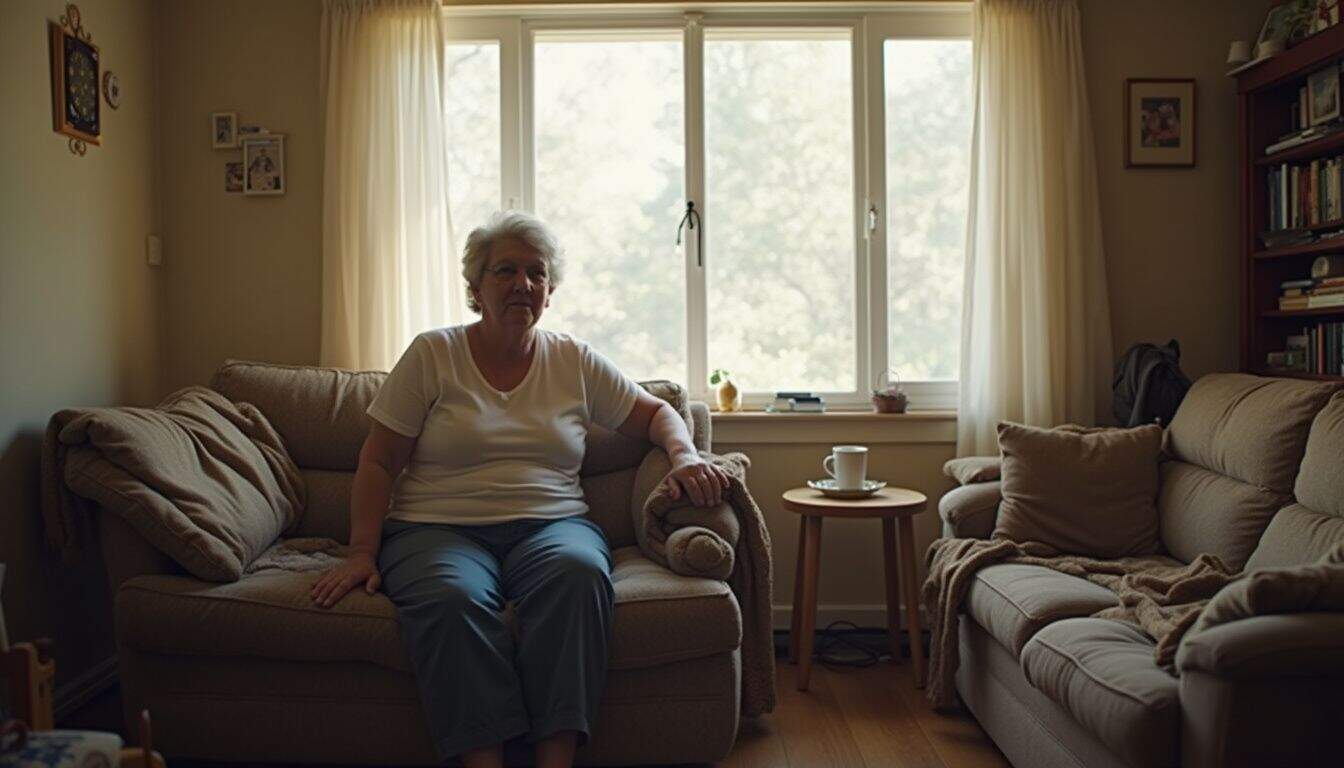
Moving to a smaller space after decades in your family home can stir up complex feelings that many Gen X women face as their children start independent lives. This emotional shift requires patience with yourself as you process memories, commas of experiences that shaped your parenting years, and the excitement of creating a fresh chapter designed just for you.
How Can You Embrace the Transition Positively?
Focus on the freedom your empty nest brings instead of dwelling on what you’ve lost. This stage opens doors to new adventures, hobbies, and experiences you couldn’t pursue while raising children.
Practice mindfulness and gratitude daily to shift your perspective from loss to opportunity. Many Gen X women find this transition challenging at first, but meditation can reduce stress and increase resilience during the downsizing process.
Create new routines that reflect your identity and interests rather than your role as a full-time parent.
View this change as a chance to prioritize experiences over possessions and lean into relationships within your community for support. I found that managing the emotions when children grow up and leave home became easier once I celebrated the possibilities of my new lifestyle.
Let go of physical items to focus on the memories created through relationships with family and friends. Your new living space should feel homely and reflect who you are today, not who you were as a busy parent.
The advantages of your new lifestyle will become apparent as you embrace this fresh chapter with optimism and excitement.
What Are the Benefits of Your New Lifestyle?
Your new lifestyle offers immediate financial benefits and opportunities for personal development. Lower living costs, including taxes, utilities, and maintenance, provide extra funds for retirement savings or vacations.
Less cleaning and upkeep result in a manageable living space, giving you more time for yourself. Studies indicate that increased social participation correlates with improved health among empty nesters, including many Gen X women today.
Various activities contribute to better health outcomes, while specific pursuits like sports and online activities positively affect mental health, especially for women.
The reduced home maintenance responsibilities allow for new hobbies, travel experiences, and improved well-being that many women discover after their children leave. Community clubs and organizations offer significant health benefits, creating connections that replace the daily interactions you previously had with your kids.
My friend Sarah found that joining a local hiking group improved her physical fitness and introduced her to lifelong friendships. Effective storage solutions, like tiny home storage ideas, help maximize your smaller space while keeping cherished memories accessible.
This transition allows you to focus on personal interests that may have been less prioritized during your busy parenting years.
How Will Empty Nest Downsizing Evolve in 2025?

Empty nest downsizing will shift toward more proactive and positive approaches in 2025. Parents like Jimmy Dunne, who sold his house and moved into a condo after his daughters left, represent a growing trend of embracing change rather than resisting it.
Gen X women are leading this movement by focusing on flexibility and lifestyle alignment instead of clinging to oversized family homes. Professional services and community resources will expand to support these transitions, making the process smoother for empty nesters who want to reconstruct or reimagine their living spaces.
Support systems will play a bigger role as more parents explore varied approaches to empty nest life. Some choose to start new careers, while others keep children’s rooms unchanged during their emotional adjustment period.
The “rollercoaster” of emotions that parents experience will be better addressed through specialized counseling and peer support groups. Technology platforms will connect empty nesters with downsizing experts, real estate professionals, and interior designers who understand their unique needs.
This evolution reflects a cultural shift where downsizing becomes a celebration of new beginnings rather than a reluctant goodbye to the past.
People Also Ask
What makes downsizing strategies smart for empty nesters?
Smart downsizing strategies help empty nesters reduce living expenses, simplify home maintenance, and create financial freedom for retirement goals.
When should parents start planning their downsizing after kids leave home?
Most experts suggest starting the planning process 2-3 years before children graduate from high school. This timeline allows families to research neighborhoods, evaluate financial options, and make informed decisions without rushing.
How do empty nesters choose the right size home when downsizing?
Consider your actual daily living needs rather than occasional guest visits. Focus on essential spaces like a master bedroom, kitchen, and living area while eliminating unused rooms that create unnecessary cleaning and utility costs.
What financial benefits can empty nesters expect from smart downsizing?
Downsizing typically reduces mortgage payments, property taxes, insurance costs, and utility bills. These savings can boost retirement accounts or fund travel and hobbies that many empty nesters want to pursue.
References
https://meyerlucas.com/blog/5-reasons-for-empty-nesters-to-downsize
https://andreadekker.com/clutter-control-for-empty-nesters/ (2024-10-22)
https://innovatehomeorg.com/blog/2018/11/columbus-downsizing-storage-planning-ideas-empty-nester/ (2018-11-14)
https://www.spacesbydee.com/downsizing-how-to-downsize-your-home-without-losing-comfort/ (2024-07-21)
https://blog.cort.com/tips/empty-nesters-downsizing/ (2021-12-20)
https://www.simplyenough.net/empty-nesters/
https://www.theorganizedmama.com/sentimental-storage-box-tutorial/ (2021-03-31)
https://www.upworthy.com/empty-nesters-downsizing-genius-tips-ex1
https://pmc.ncbi.nlm.nih.gov/articles/PMC3134333/
https://www.extraspace.com/blog/home-organization/space-saving-furniture-ideas/ (2024-09-25)
https://www.guardianstorage.com/space-saving-furniture-ideas-transform-your-home-for-a-fresh-start/ (2025-03-21)
https://www.aperfectcloset.com/post/designing-for-downsizing-closet-and-storage-tips-for-empty-nesters (2025-08-25)
https://www.nasdaq.com/articles/kids-moving-out-time-make-empty-nester-budget-heres-how (2025-05-14)
https://www.johnhancock.com/ideas-insights/4-financial-moves-for-empty-nesters.html
https://www.realtyexecutives.com/office/midwest/blog/downsizing-tips-for-empty-nesters
https://urbaneer.com/blog/dear-urbaneer-do-you-have-any-advice-for-parents-renovating-their-empty-nest (2023-11-28)
https://www.nestfully.com/test-hassanparadym/blog/when-and-how-to-downsize-making-the-right-housing-choice-272669558 (2025-08-21)
